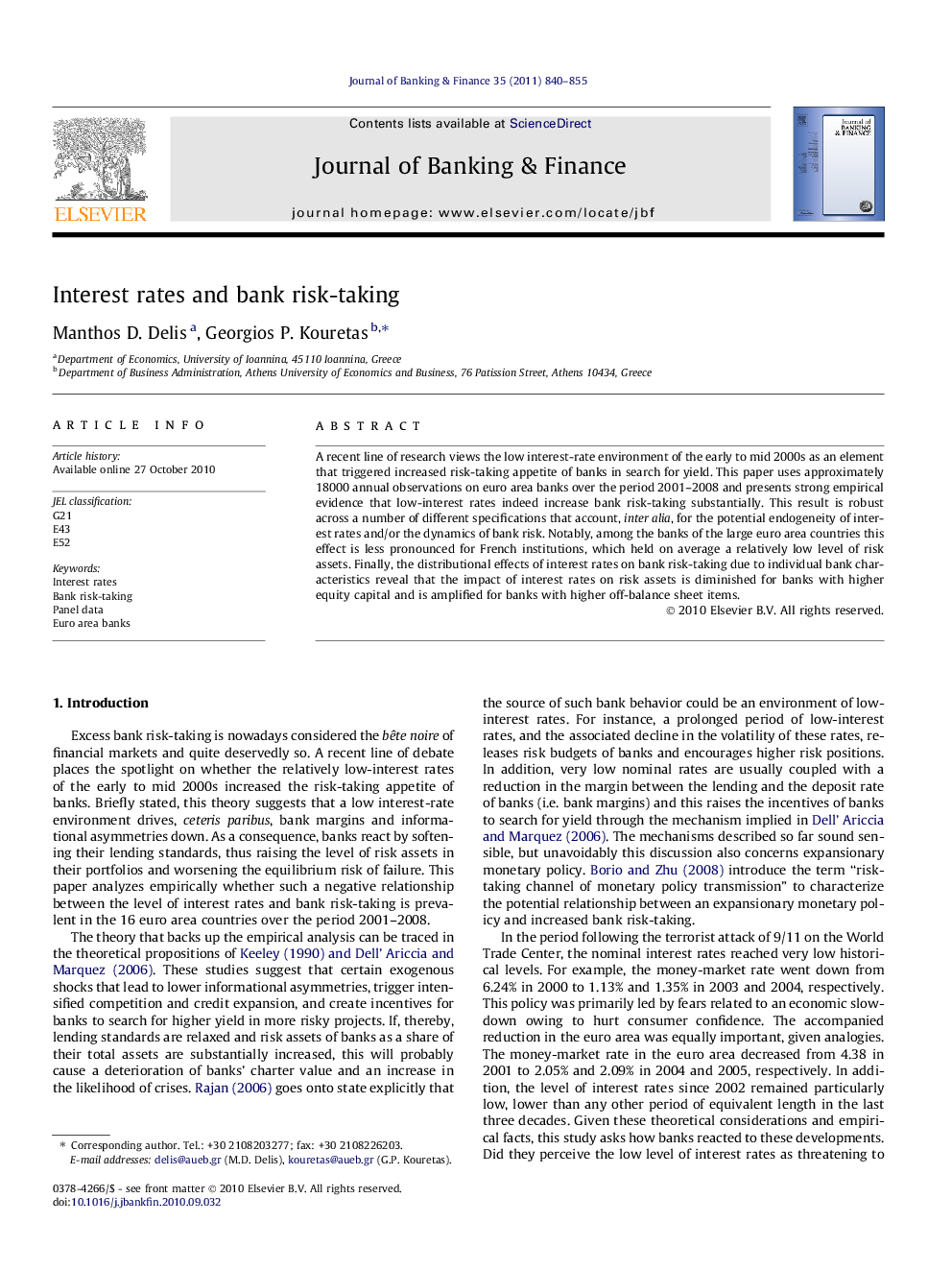| Article ID | Journal | Published Year | Pages | File Type |
|---|---|---|---|---|
| 5090074 | Journal of Banking & Finance | 2011 | 16 Pages |
Abstract
A recent line of research views the low interest-rate environment of the early to mid 2000s as an element that triggered increased risk-taking appetite of banks in search for yield. This paper uses approximately 18000 annual observations on euro area banks over the period 2001-2008 and presents strong empirical evidence that low-interest rates indeed increase bank risk-taking substantially. This result is robust across a number of different specifications that account, inter alia, for the potential endogeneity of interest rates and/or the dynamics of bank risk. Notably, among the banks of the large euro area countries this effect is less pronounced for French institutions, which held on average a relatively low level of risk assets. Finally, the distributional effects of interest rates on bank risk-taking due to individual bank characteristics reveal that the impact of interest rates on risk assets is diminished for banks with higher equity capital and is amplified for banks with higher off-balance sheet items.
Related Topics
Social Sciences and Humanities
Economics, Econometrics and Finance
Economics and Econometrics
Authors
Manthos D. Delis, Georgios P. Kouretas,
